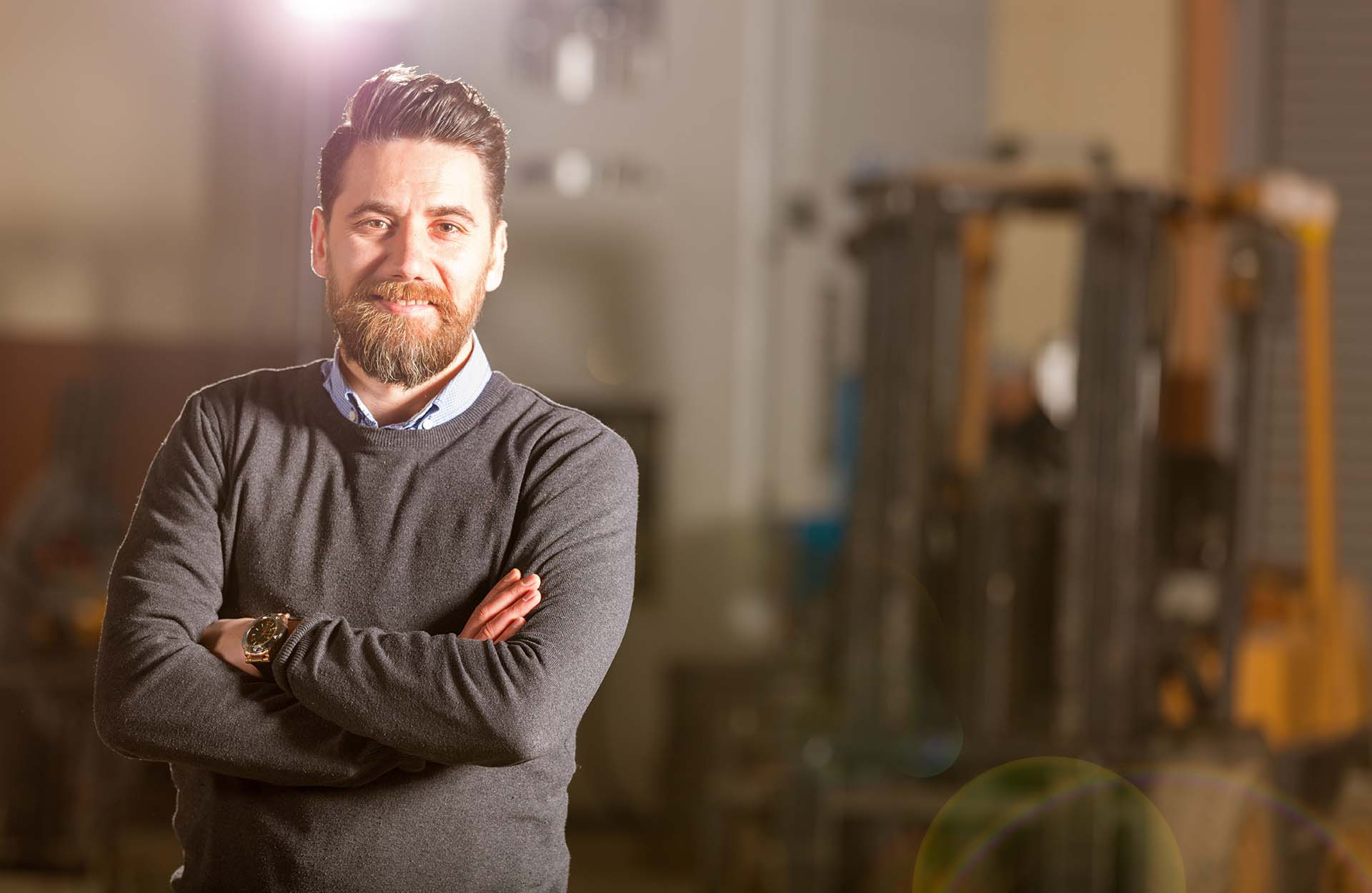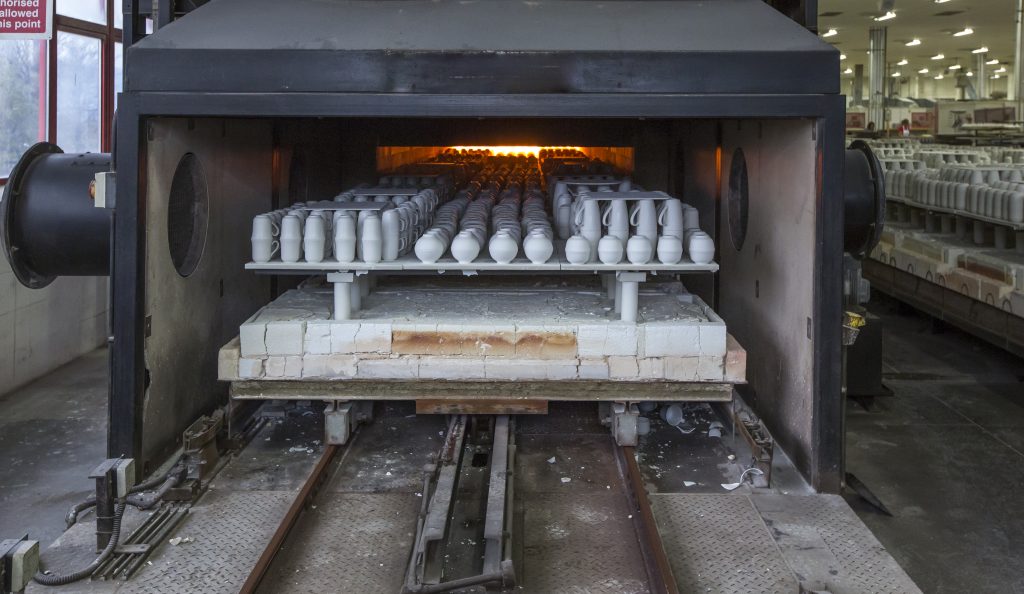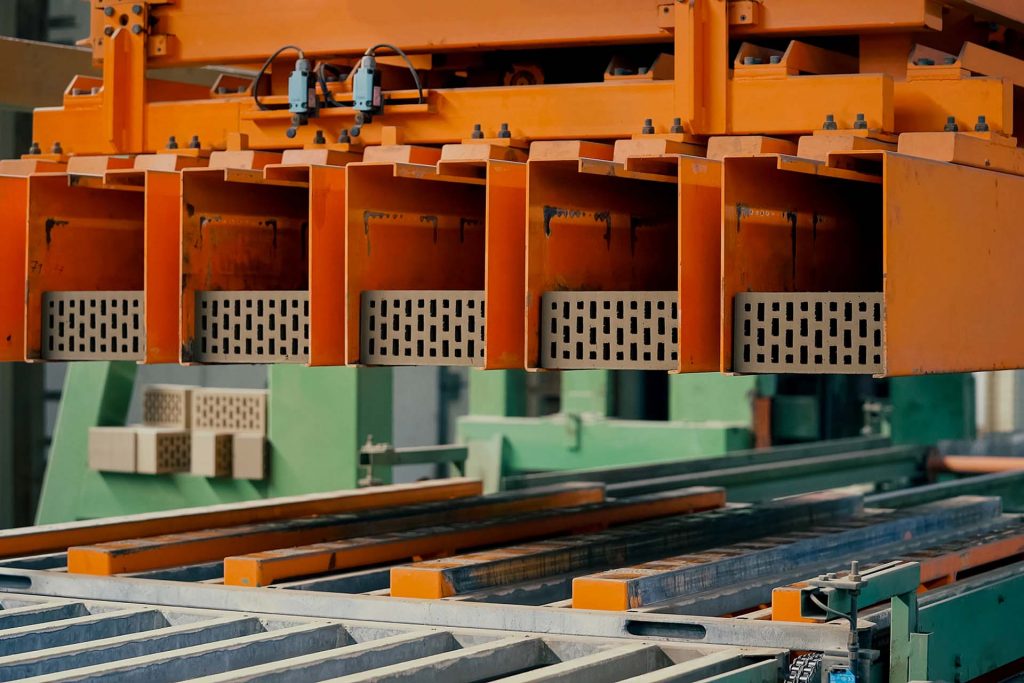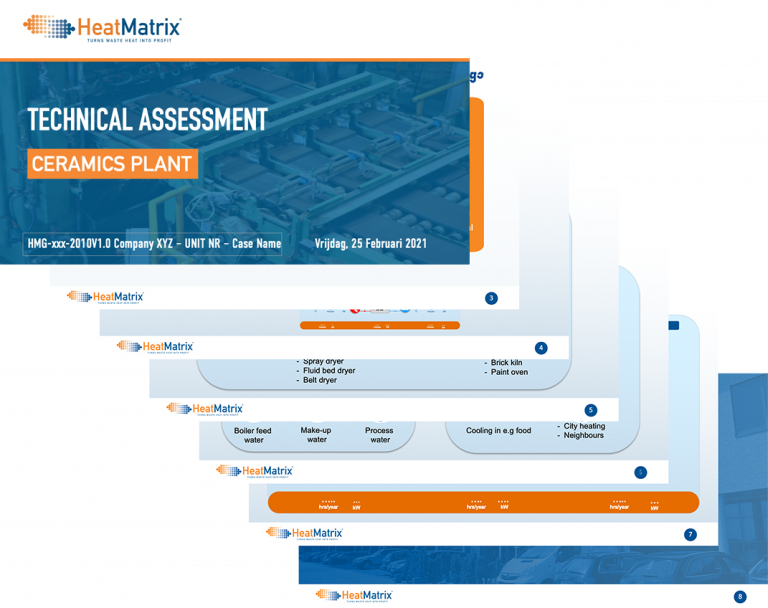Waste heat recovery systems for flue gas and exhaust air in the Ceramics industry
Do you need to reduce your energy consumption? Our experts determine your heat recovery opportunities and implement the best heat recovery system in your ceramics plant.
Your oven or kiln is losing energy via the stack or chimney
What is keeping you from recovering this waste heat?

Operational priorities?
You lack time to investigate possibilities to reduce your energy consumption.

Corrosive and fouling flue gases?
Flue gas from your kiln or oven is corrosive and fouled.

The business case?
The payback time of waste heat recovery systems must be less than 5 years.
HeatMatrix engineers and manufacturers heat exchangers to recover industrial heat and improve energy efficiency for Ceramics plants
Save energy on your thermal process
Recover waste heat - that is now lost - from flue gas or exhaust air
- Overview heat recovery opportunities
- Fouling and corrosion resistant systems
- Payback time 3 - 5 years
- Turnkey project delivery
Your thermal process has waste heat recovery potential

Recover more heat from Ovens and Kilns
Recover more heat from the flue gas of your oven to preheat air for the drying chambers or to recycle more heat to the first section of your oven.
Heat recovery on Ovens and Kilns
Heat recovery on RTO and Incinerator
Regenerative Thermal Oxydisers are used to remove pollutants from gas streams from the oven. Additional heat recovered from the flue gas is used to heat up air to the dryer section.
How waste heat recovery systems work
Capture waste heat
Exhaust air from the oven and flue gases are released to the atmosphere through the chimney. Our heat recovery system captures this heat from kilns, ovens, RTO’s or incinerators.
Preheat air or water
Cold combustion air, drying air or process water is heated with the captured waste heat. This directly reduces the consumption of fossil fuels.
Our heat recovery systems for Ceramics plants
Polymer Air Preheater
Stainless steel or Polymer Economiser
Warm up process water with waste heat from flue gases. The economiser is made corrosion resistant and is easy to maintain and to clean.
Technical Institute for the Ceramic Industry
Polymer Air PreHeating technology researched under the harsh conditions of a brick plant
In the ceramics industry flue gases are released from the oven at a temperature of 100-200 °C. This flue gas is sent directly to atmosphere and a significant amount of energy is lost. Main reason for not recovering heat from this flue gas is the presence of sulphur oxides, chlorides and fluorides and fouling. When cooled down, an acidic condensate is formed which causes corrosion and fouling accumulates.
Polymer heat recovery systems of HeatMatrix are specifically designed for heat recovery from corrosive and fouled flue gases. A test setup was installed at two brick manufacturers with corrosive and fouling flue gases.
The pilot tests showed that the HeatMatrix polymer Air Preheater is able to handle both corrosion and fouling aspects of the flue gas. The installed cleaning system in combination with the smooth surface of the polymer make it possible to clean the heat exchanger within 3 minutes and remove accumulated dust and particles.

Your path to lower CO2 emissions, energy consumption and costs

Technical assessment
Our heat recovery experts determine the most interesting opportunities for waste heat recovery for your ceramics factory. You receive an overview of options.
Heat Recovery Proposal
Turnkey Project Delivery
HeatMatrix will design, deliver and, upon request, install a complete heat recovery system in your ceramics plant. You don’t have to worry about the implementation.
FAQ's
How do I save energy in my ceramics plant?
Payback time of waste heat recovery in a Ceramics plant?
The pay-back time of waste heat recovery in a ceramics plant depends mainly on the usage pattern of the recovered heat. Simultaneous operation of the waste heat source (oven) or heat user (for example a dryer) impact the pay-back time. A typical pay-back time will be in the range of 3-5 years.
What causes fouling on my ceramics plant?
The flue gas contains a number of foulants: dust from the bricks and tiles, condensed acids, salt from the clay and soot coming from the combustion. The foulants are sticky and will block downstream equipment. The polymer heat exchangers have a low tendency of chemical bonding and a very smooth surface. Therefore there is a lower degree of fouling. An in-situ cleaning system is installed which cleans during operation.
Heat recovery has been tested before in the ceramics industry, but without success. Why does your system work?
The two challenges facing heat recovery in the ceramics industry are corrosion and fouling. For these challenging duties, we offer an innovative solution, based on polymer heat exchange technology. The solution is corrosion resistant, slows down the build-up of fouling and is easy to clean with a built-in cleaning system.
How do waste heat recovery systems of HeatMatrix solve corrosion problems?
Elements from the clay and fuel form acids in the flue gas, like HF and H2SO4. These acids will condense out when the flue gas temperature drops below - what is called - the Acid Dew Point. This condensation leads to corrosion of surface materials. Our polymer heat exchange technology allows flue gas to be cooled without having the risk of corrosion.
Technical assessment of waste heat recovery for your bricks or tiles plant
- Analysis of your thermal process
- Minimal input data required
- Business case on your savings potential

